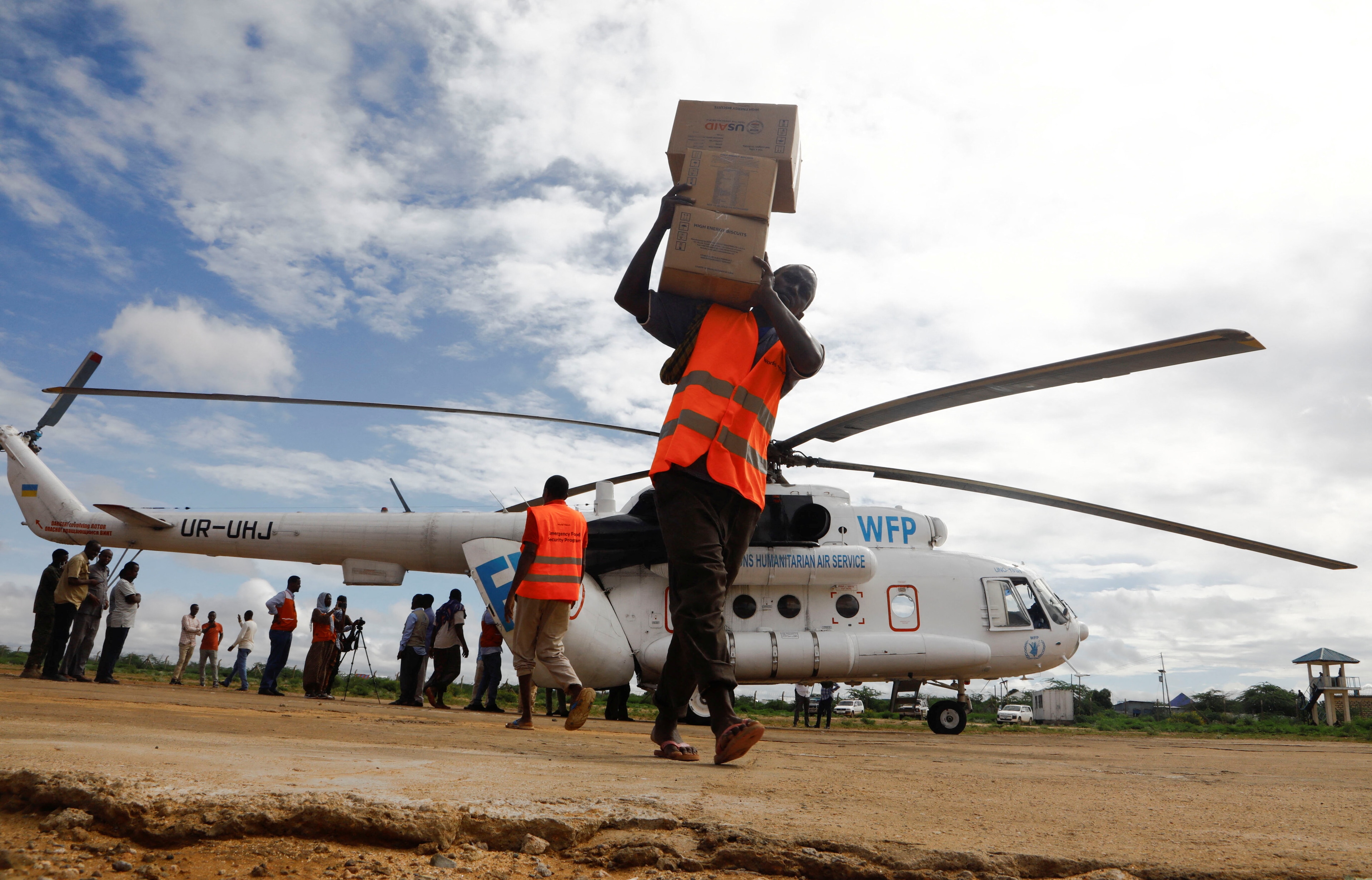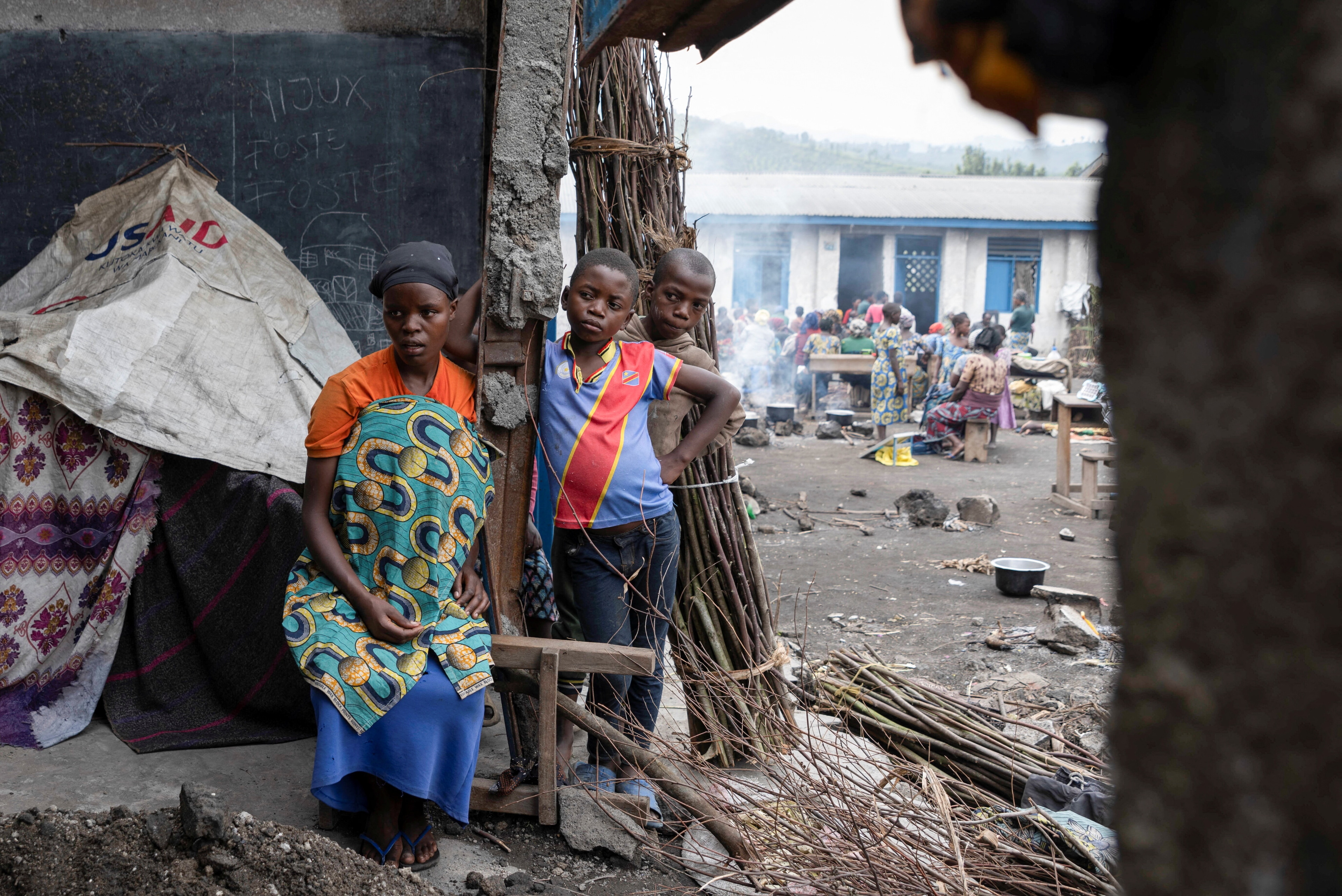It’s not just NGOs tackling humanitarian crises. Banks have a role too

Just 10% of the 90 million people around the world who need a mobility device can access physical rehabilitation services
Image: ICRC
Stay up to date:
Middle East and North Africa
Ahmad was five years old, playing in his garden in Idlib, Syria, when the unimaginable happened: a mortar landed on his house. Thankfully Ahmad survived the blast, but lost both his legs. After several operations, Red Cross doctors in Tripoli met Ahmad and his family. Over time they gained his trust, fitted him with prosthetic limbs and worked on physical therapy.
Of the 90 million people with physical disabilities around the world who need a mobility device, just one in 10 can access physical rehabilitation services. Not only does disability impact individual health and well-being, it also leads to social and economic exclusion.
Later this year, the International Committee of the Red Cross will launch the world’s first humanitarian impact bond, securing new finance to build three physical rehabilitation centres and help thousands more people with disabilities. The new model has seen the ICRC partner with social investors, institutional funders and governments on a “payment for results” funding mechanism over five years. The bond is an example of how previously untapped finance streams are being activated and how new players are helping to tackle humanitarian issues.
Accept our marketing cookies to access this content.
These cookies are currently disabled in your browser.
Increasing fragility
In developing the bond, the ICRC ventured into new territory. The project involved harnessing specialized financial expertise, designing new models of collaboration, overcoming budgetary constraints and particularly getting comfortable with risk. We have pushed our partners to value impact, beyond financial return.
We hope that once the concept is proven, it will demonstrate that non-traditional financing models can work. There is great potential for investments with a clear intention to improve the social, environmental and economic conditions in fragile places.
Fragility, along with conflict and violence, have become a permanent feature of so many places – take Syria, Iraq, Yemen, South Sudan, the Central African Republic, and the Horn of Africa.
Wars are getting longer, they are more complex and the humanitarian need is great. The World Bank estimates that 2 billion people live in places affected by fragility, conflict, and violence. Today 17% of people in extreme poverty live in these places, but by 2030 this will swell to almost 50%. This generates huge costs, both socially and economically, with the cumulative international humanitarian response surpassing $15 billion annually.
Public-private partnerships are now accepted as a necessity in many areas of work, and there is already a strong drive from the humanitarian and private sectors to advance together. Technology has triggered new types of partnerships and innovations that enhance beneficiaries’ choice and power. For example, because of a partnership between the ICRC, the Jordanian Red Crescent and the Cairo Amman Bank, refugees can access emergency funds using iris-scanning technology at ATMs across Jordan. This means they do not need to carry a bankcard or remember a PIN, which helps illiterate or ageing people to access money reliably and directly.
But we also need to go further, to harness the untapped potential of resources and ideas. And to do this we need to shift into a new paradigm, a different way of thinking.
Modernising humanitarianism
When the Global Future Council on the Humanitarian System meets this week, we are inviting a conversation with states, multilateral organisations, institutions and the private sector about how to inject more varied expertise and develop new models for the humanitarian ecosystem. We need to continue to modernise current humanitarian work, while at the same time drive a more systemic shift in how we envision the operation and financing of humanitarian solutions.
How can we create new funding mechanisms to better access new streams of finance? A key aspect of a paradigmatic shift will be to mainstream economic models where actors invest not only with the expectation of return, but also of impact. If private sector capital can be harnessed for social good, the potential to scale humanitarian solutions is vast. However, a triangular investment-impact-return model will not fall from the sky – the humanitarian sector must put ideas on the table and make the clear case for why everyone stands to gain from investment in improving lives. Measuring impact on the basis of solid data will be critical for such new models.
In all the countries in which the ICRC works, there is a need for water, health, education, food, communication or construction services. Principled humanitarian action – neutral, impartial and independent – contributes to reach vulnerable people and to build more stable livelihoods; it prepares the ground so that when the fighting stops, recovery, reconstruction, development and economies can restart more quickly. The humanitarian ecosystem must find ways to encourage investment in fragile contexts. This could be through bonds and other financial mechanisms, insurance schemes, platforms that facilitate the investment by big business into SMEs; the possibilities are vast.
It has not traditionally been core business for humanitarian organisations to envision financial products for widespread investment in humanitarian solutions. A typical large investment bank has hundreds of people employed to analyse risks, trends and future opportunities, using the most up-to-date tools. A typical large humanitarian organisation analyses risks and trends in its operating environment through the very specific lens of humanitarian need. Imagine the potential for a wide-scale shift in social impact if those skills and resources were linked. Partnerships multiply our experiences, our knowledge, and our abilities to invent, test, and improve. We want to take the best expertise from each sector and build on it together.
Picture the humanitarian sector in 2030. It is certain that humanitarian response, disrupted by technology, will look very different. Digital connectivity will allow for more impactful solutions based on people’s self-identified needs, and more efficient coordination between services. Of course, there are many humanitarian contexts in which digital platforms will not be appropriate and face-to-face engagement with vulnerable populations will remain indispensable. It will be crucial to think and plan our future visions carefully, establishing the building blocks along the way that will ensure that the changes are always in the best interests of the people for whom they are made.
Governments, the humanitarian and the private sectors have to be ready to take risks: to face the risk that a project does not produce the desired results; the risk of being challenged by people who think that the private sector should not be involved in a humanitarian venture.
With increasingly devastating humanitarian costs, it is far riskier to do nothing than to explore new ways to operate. If we don’t shift our thinking now we will never know whether there are solutions that can vastly improve the lives of vulnerable people.
Ahmad is at school now, he’s bright and confident as he plays with other kids in the playground. He, and thousands like him, are a reminder that we must strive for something greater so that humanitarian action advances in impact, effectiveness and scale in ways never seen before.
Don't miss any update on this topic
Create a free account and access your personalized content collection with our latest publications and analyses.
License and Republishing
World Economic Forum articles may be republished in accordance with the Creative Commons Attribution-NonCommercial-NoDerivatives 4.0 International Public License, and in accordance with our Terms of Use.
The views expressed in this article are those of the author alone and not the World Economic Forum.
Related topics:
Forum Stories newsletter
Bringing you weekly curated insights and analysis on the global issues that matter.
More on Resilience, Peace and SecuritySee all
Florian Krampe
July 31, 2025
Naoko Tochibayashi
July 28, 2025
Vanina Farber
July 21, 2025
Robert Piper
July 17, 2025
Resilience roundtable: How emerging markets can thrive amid geopolitical and geoeconomic uncertainty
Børge Brende, Bob Sternfels, Mohammed Al-Jadaan and Odile Françoise Renaud-Basso
July 9, 2025
Kate Whiting
June 19, 2025





